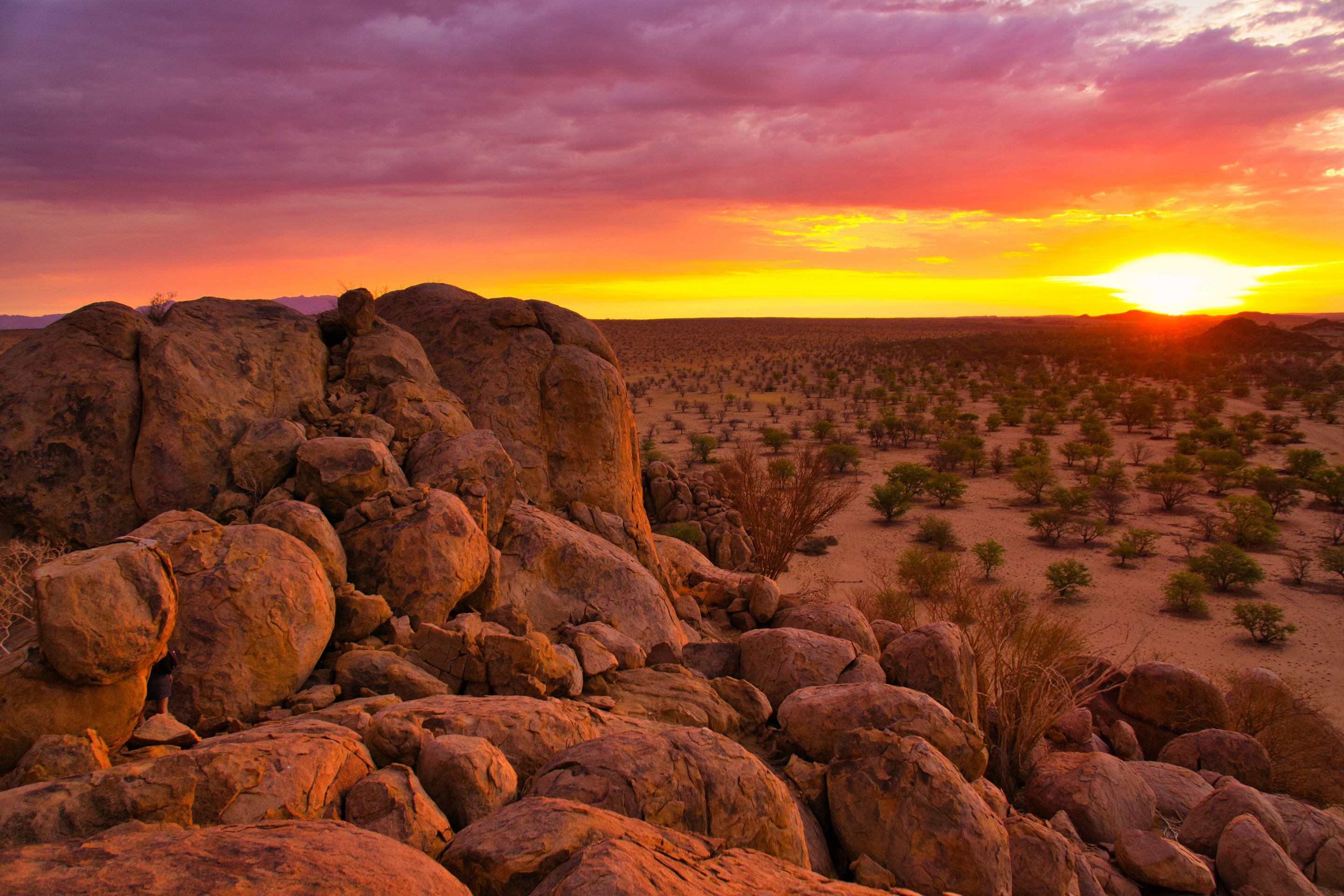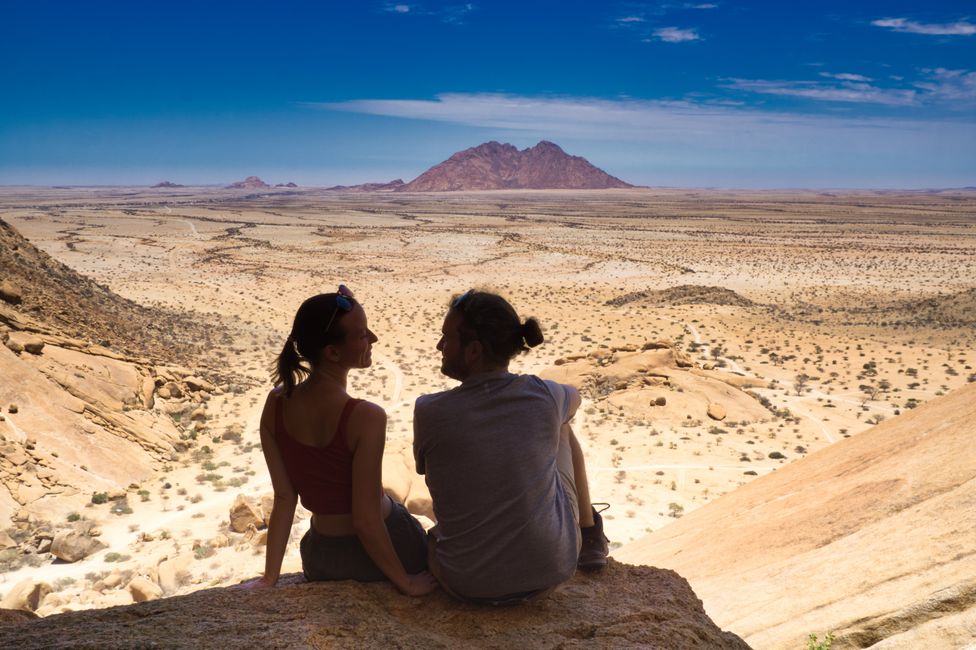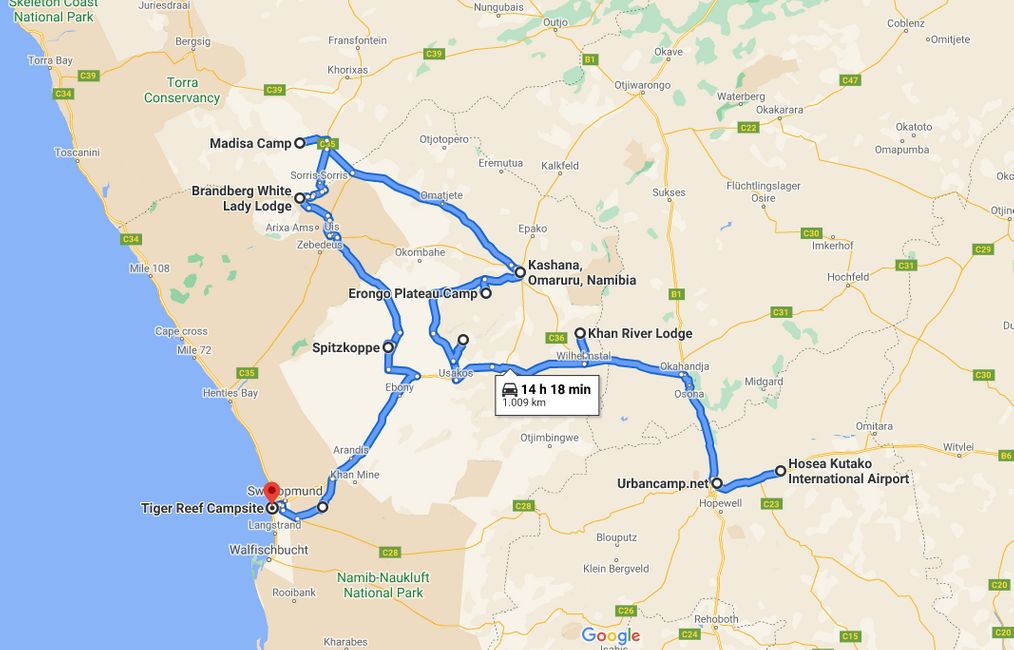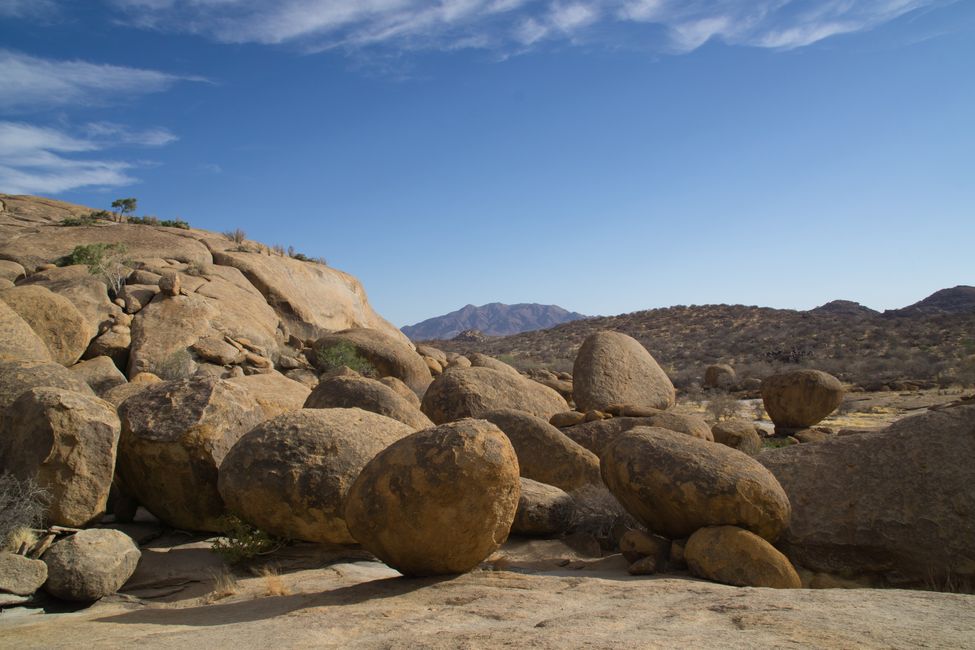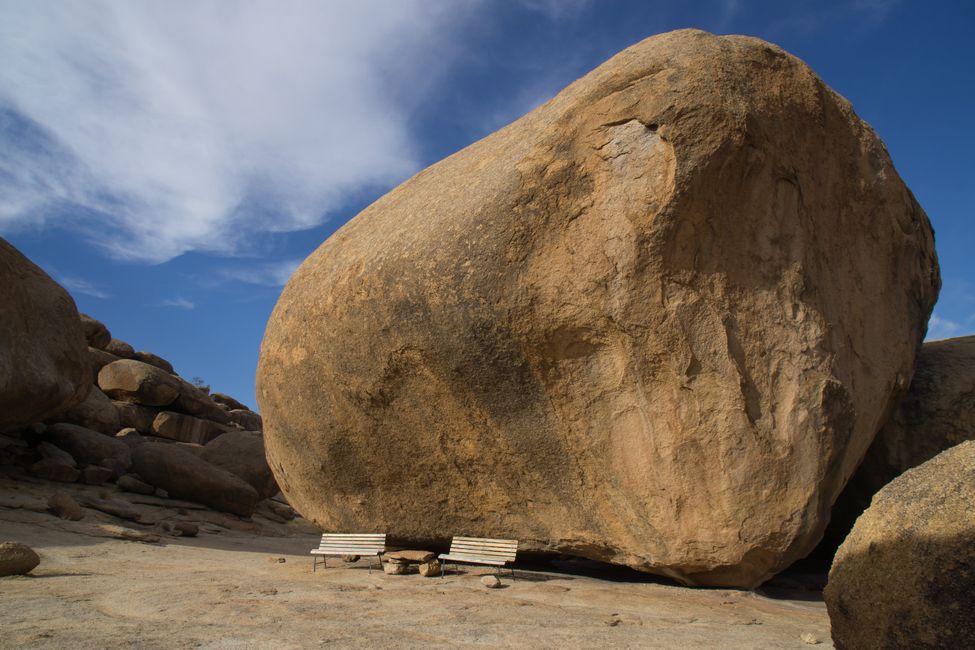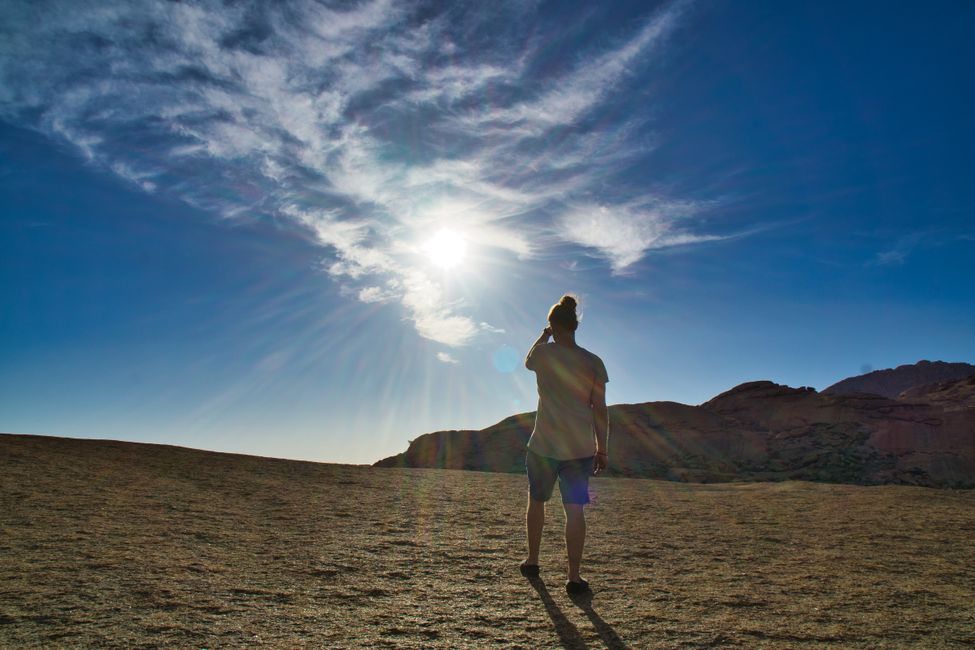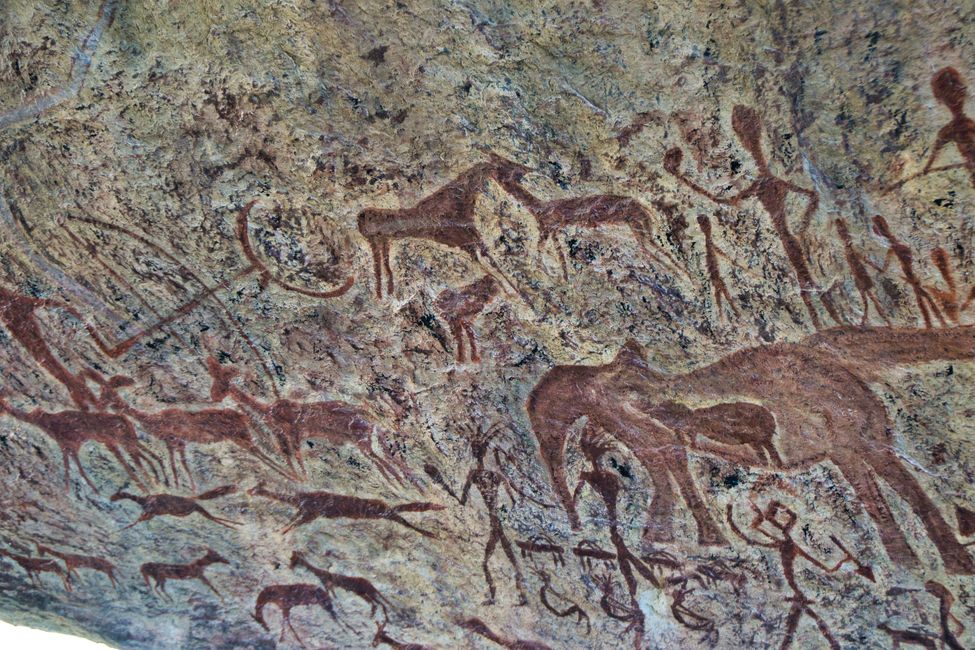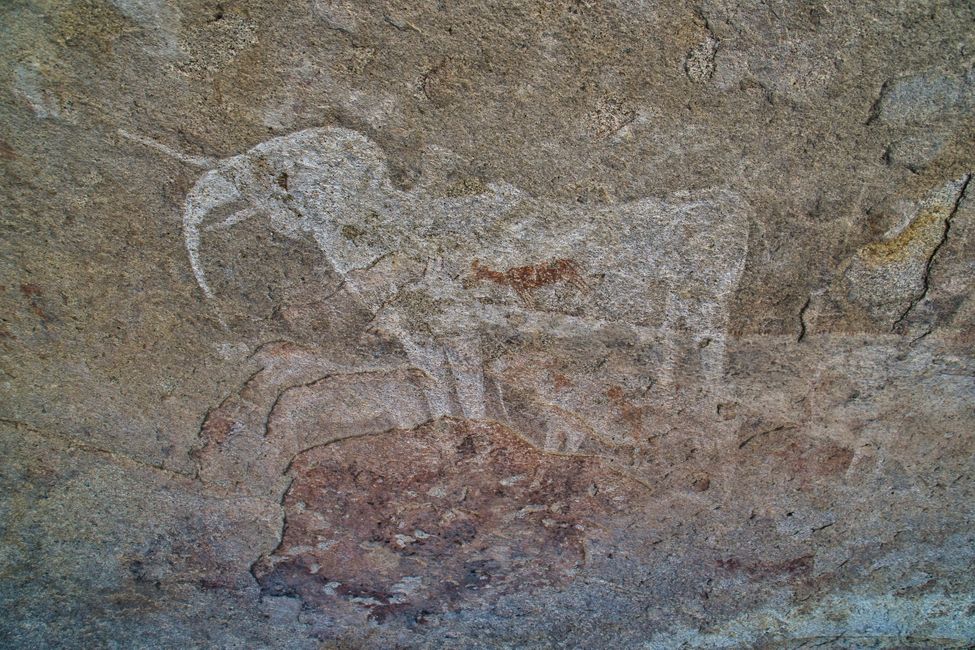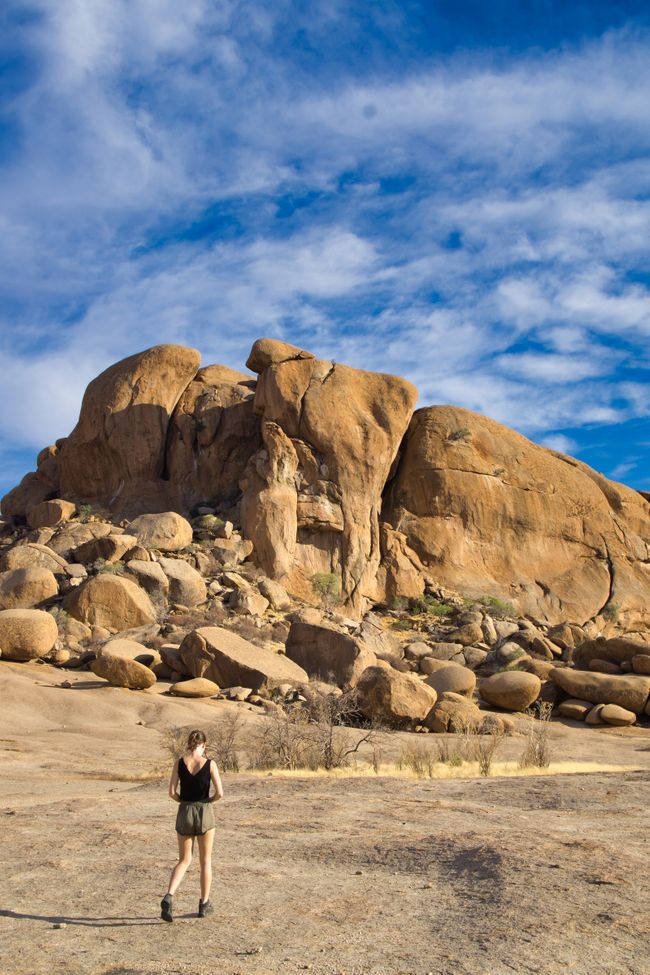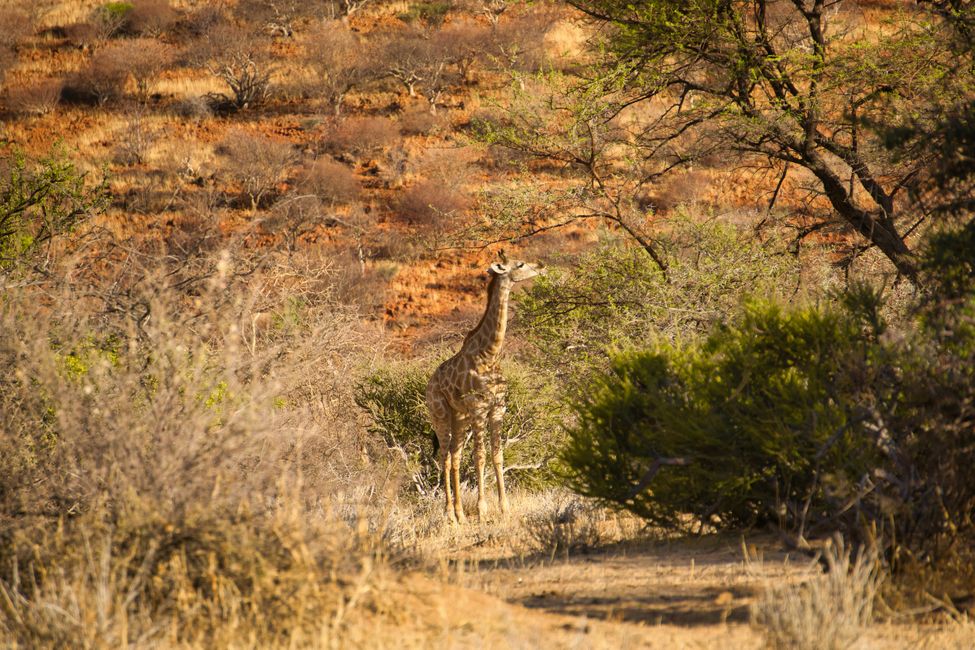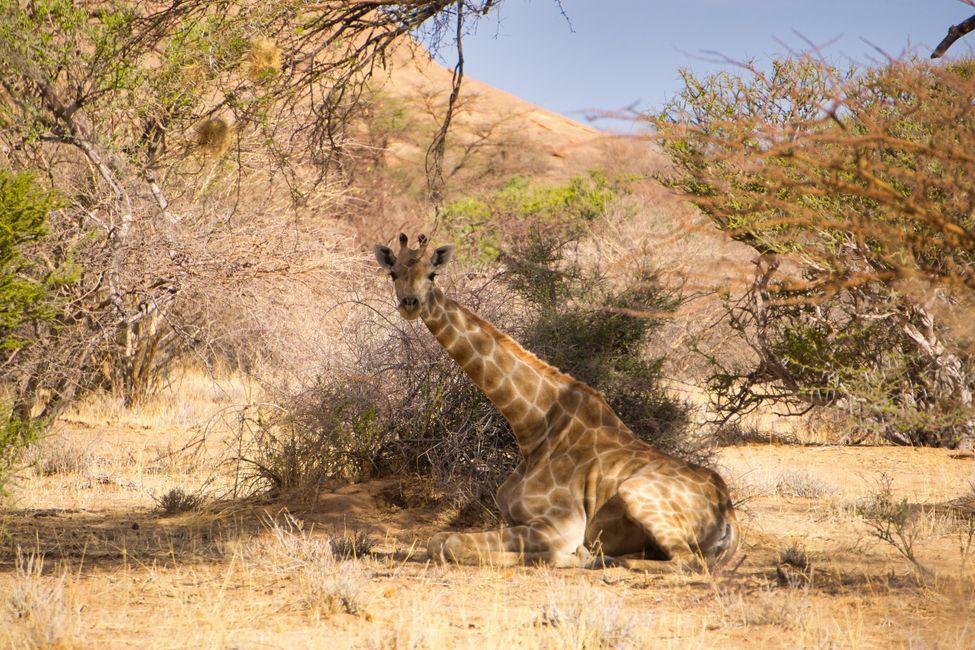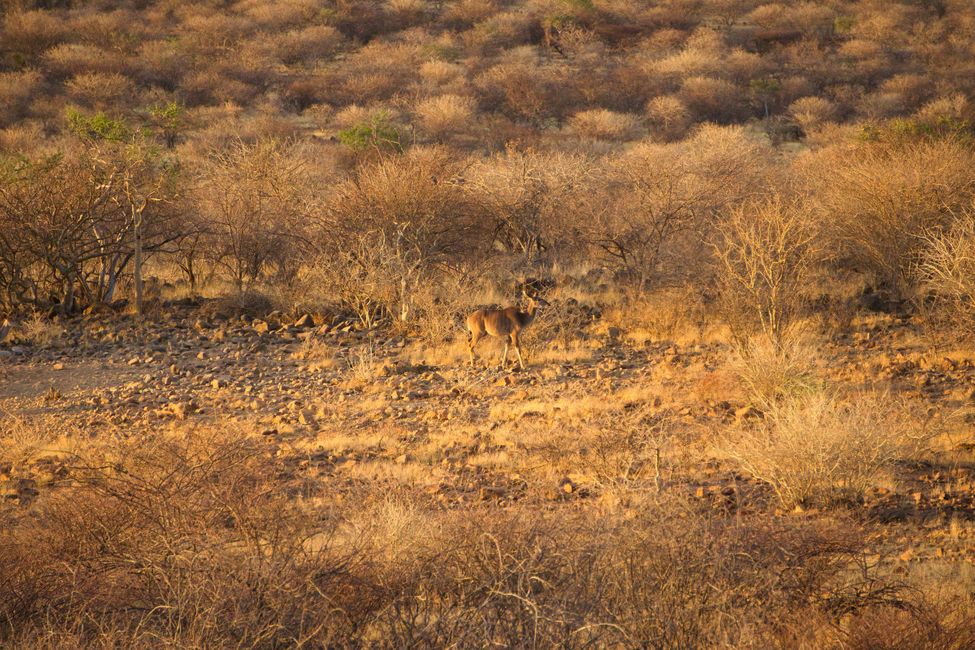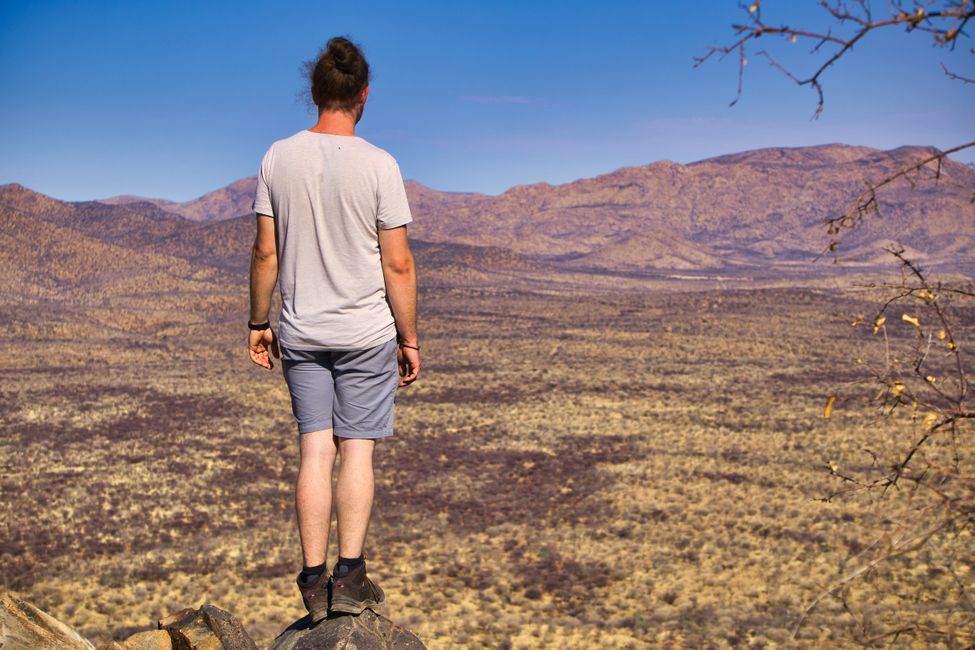The Erongo Region - Part 1
Verëffentlecht: 21.11.2021
Abonnéiert Iech op Newsletter
From Windhoek, we first drive to the Erongo Region, which stretches from central Namibia towards the west coast. The landscape in this region, covering over 60,000 square kilometers, couldn't be more diverse. From bright, barren steppes to red mountains with huge rock formations, to the rugged Atlantic coast, it has it all.
The first few days, we spend in the Erongo Mountains, our first stop being the Khan River. Our first campsite is located at this dried-up riverbed, which is also referred to as 'Rivier'. To reach it, we have to drive through several gates with our car. At the first gate, our details are recorded, such as our license plate, destination, and duration of stay. The next gates on the private property are unlocked. The passenger has the unpleasant task of getting out at each gate, so that the driver can pass through and then close it again. Before getting out, it doesn't hurt to take a quick look around, as the fences primarily serve the purpose of keeping the wildlife within the designated area. Although it would probably be extremely rare, one would rather not encounter a wild rhinoceros, leopard, or even just step on a snake.
After two hours, we arrive at the Khan River from Windhoek and settle in at the campsite. Fortunately, it's nothing like European campsites here. Instead, we find a huge space on the sandy riverbed just for ourselves, with much more space than we would need for the two of us. Typical of Namibian campsites, there is a brick barbecue and fire pit, an outdoor shower and toilet, and a sink for washing dishes. These 'sanitary facilities' consist of brick walls without doors and ceilings, so that when showering, you can enjoy the starry sky and have a view of the riverbed. The campsite is fenced on the side facing the private game reserve, but not towards the riverbed. So, one can imagine all night long which animals one might encounter when getting up.
We park our car under a big tree, hoping to have shade at least part of the time to prevent the rooftop tent from getting too hot. Setting up the rooftop tent is not more difficult, as our car rental explained to us, than opening a beer. Although I personally have some problems with it without a bottle opener, but I better not say that. It's good that we are traveling together! Actually, it's not difficult at all, and after a few minutes, our rooftop tent is set up on the car roof. After releasing a few straps, the tarp needs to be removed, and the ladder needs to be extended. When you pull the ladder down to the ground, the rooftop tent pops up and is almost ready. A few poles on the sides, and it's done. Inside, there is a mattress, so that two people can sleep very comfortably with a width of 1.40 meters and a length of 2.20 meters.
In the evening, we make a fire and end the day with a sundowner - a drink that is enjoyed at sunset.
The next day, we drive deeper into the Erongo Mountains, to the Ameib Guest Farm. Here, a diverse wildlife is offered within the framework of a wilderness reserve, as well as beautiful landscapes with endlessly wide areas, mountains made up of stacked red rocks, and green valleys. It is incredibly hot, almost 40°C, so we are particularly happy about the pool at the campsite. The place here is not quite as spacious, so for the first time, we can also discover other campers. Besides couples, we even meet families with small children and grandparents, as well as solo travelers.
The area has a lot to offer both in terms of landscapes and culture. First, we explore the Elephant's Head, a huge rock formation that somewhat resembles an elephant in shape. Next to it is the Bull's Party, a huge rock landscape with monstrous boulders, which make you feel tiny in comparison.
In the surroundings, we spot a few animals for the first time: a giraffe, a few zebras, and antelopes. With binoculars, you could spend hours watching these beautiful, graceful animals. Time flies by, even though nothing really happens.
On the reserve's premises, there is also the Philip's Cave, a cave with millennia-old cave paintings. To visit it, you have to walk for half an hour in the scorching heat across a valley and then up a barren rock. Since we are in a reserve here, there are also wild rhinoceroses and leopards living here, so we pay close attention to every crack and movement around us during the hike. We notice a huge skeleton under a tree halfway there, which must belong to the bones of a giraffe.
Philip's Cave itself is an easily accessible cave in the rock with a gigantic view. The cave paintings fascinate us particularly because they are not only thousands of years old but also appear to be from a different world. They have survived until today, so now we can stand here and admire them, without any barriers, glass panes, or museum guards protecting them. They are simply here, in the middle of a mountain, reliant on the few daily visitors treating them with respect, not scribbling on them or even touching them.
Our journey through the Erongo Mountains leads us to the Erongo Plateau, just before the small town of Omaruru. During our drive on the bumpy gravel tracks, which lead deeper into the wilderness reserve, we spot two giraffes that are undisturbed by us while feeding. We can observe these leisurely animals slowly munching on the leaves of individual trees. Despite their actually conspicuous patterns and impressive size, the giraffes are perfectly camouflaged in their natural environment, so that we only notice a third giraffe behind a tree after a few minutes.
The last stretch to our next campsite on the Erongo Plateau takes us up an adventurous rocky track. Moving at 10 km/h, we make slow progress and are relieved to finally reach the top after an hour. It is even hotter here than before, a scorching 40°C. Every movement makes the sweat flow, so that shade is the only way to survive the last hours of the scorching noon. Like many campsites, there is a waterhole here to attract animals. There, we spot a small herd of female kudu antelopes (recognizable by the absence of antlers), which can be observed well through our binoculars. Behind them, the sun slowly sets, creating warm, deep-red shades over the mountainous landscape.
Abonnéiert Iech op Newsletter
Äntwert
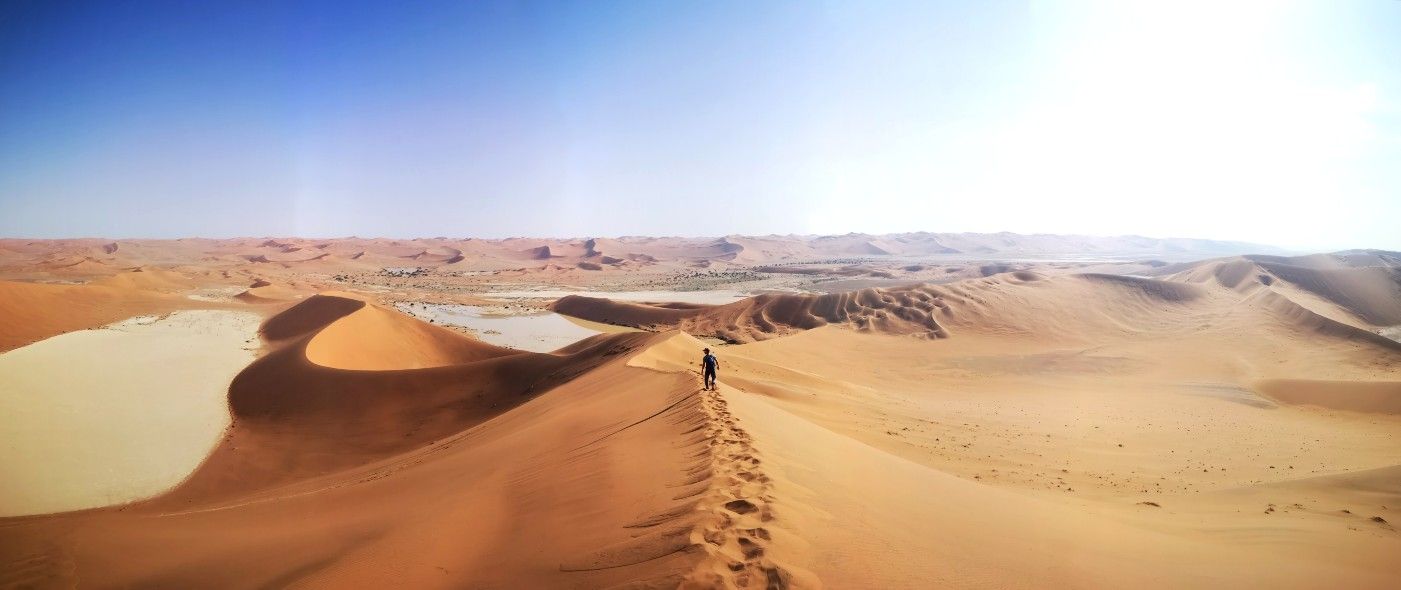
Reesberichter Namibien
